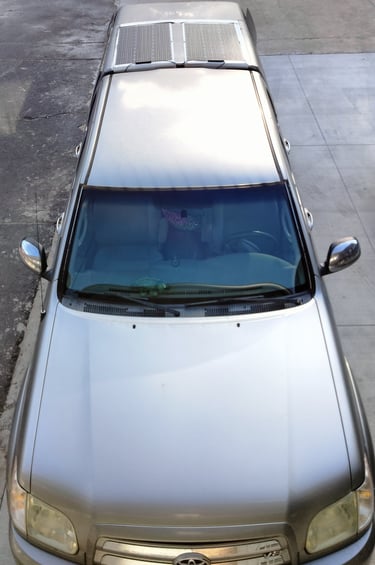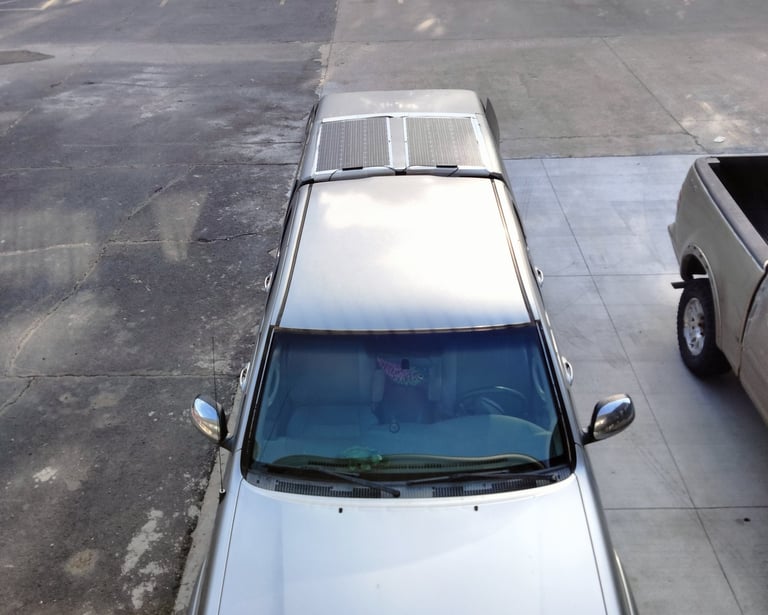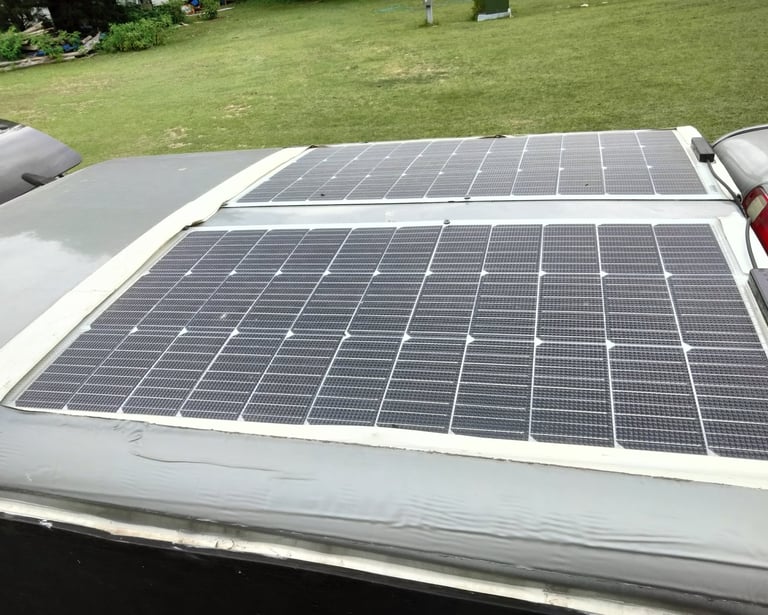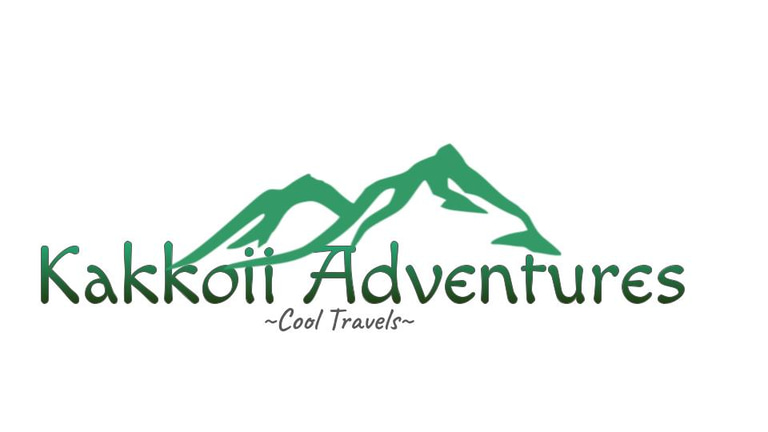What's Stopping You? Change Your Life!
Conversation Under the Panels
Traveling with Solar Panels
WILLIAM
10/17/20253 min read


We’re leaving California after 60 years. We will drive across the country on I-40, winding our way through America’s Southwest. We check the tires, oil, and coolant on our ever-dependent 2006 Toyota Tundra (shoutout to Harvey and the crew at Foothill Auto Repair and Tire in Browns Valley for keeping my truck alive). And the solar panels.
On the roof of our shell, we have mounted two Topunive brand flexible solar panels producing 100 watts of energy. They are attached to the roof by BougeRV brand waterproof butyl tape and a few self-tapping screws. Using a series of cables and connectors, the electricity is stored in Jackery brand power stations for later use. Not that complicated— all available on Amazon and very reliable. We then use these batteries to run our F40C4TMP 12-volt refrigerator, which can be a necessity when crossing the Southwest and miles away from the store. Very handy. For a total of approximately $500 USD, we are able to eat our cheese sandwiches, drink our colas, and use our rechargeable flashlights, phones, and cameras in the middle of the southwestern desert.
We are currently based in California, where relatively nobody asks about the two solar panels on my truck. They’re just there—like roof racks or an antenna. Homes have them, schools have them, parking lots have them. You stop seeing them after a while. Up on the roof, the panels do more than make volts. They say I can park where I want and stay a while. That’s the part that turns heads—the idea of moving without asking for a plug. In places where power is cheap and the grid feels solid, maybe there’s less reason to think about the sun. But in the desert, far removed from a plug and lacking a long enough extension cord, it becomes quite handy. When it’s on the back of the truck, it becomes power you can touch—power that I have some control of. I’ve learned not to oversell it. Solar is simple, not magic. Clouds still happen. Shade still matters. You plan a little, angle a little, and let the sun do its job. By evening, the batteries are topped and my cheese sandwich and cola are cold. That’s the whole story.
In California, people rarely ask because they have grown up in a solar panel, wind turbine environment for the last 30 years. Mary has had a couple of people ask about the panels. Usually, it’s older people who grew up with little pre-solar influence.
When traveling in the more rural southern parts of the United States, we get many more questions. My favorite exchange was with an older woman at a small-town motel. I went outside to load my luggage in the truck and came across this very kind lady as she leaned on a balcony railing, smoking her morning cigarette. She asked me what the panels were. I explained to her what they were, their job, and how they worked. She looked at the truck, the panels, and me and said, “You’re not from around here, are you?” I like to think she asked because she was trying to imagine the possibilities.
Either way, the panels keep quiet and do their work. I drive, park, and listen to the questions. The answers are short. I’ll let the sun—and the results—explain the rest.
If You Go
Route: Interstate 40, through the Mojave, Arizona high desert, and New Mexico plains.
Power setup: Two 100W flexible solar panels (Topunive), Jackery power stations, 12V fridge.
Best time: Late spring or early fall—cooler days, long sun hours.
Tip: Bring shade cloth, a folding chair, and patience. The best power comes when you’re not in a hurry




